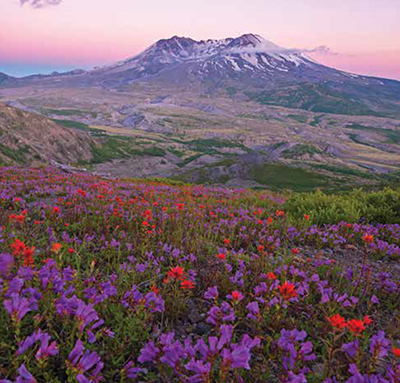 As I’m writing this, the Institute for Creation Research is in the middle of stay-at-home orders due to the COVID-19 pandemic. So, from my home office I’m reviewing articles for this issue of Acts & Facts. We’re highlighting Mount St. Helens because it’s been 40 years this month since the volcanic eruption. This event offers a good explanation for how enormous geologic changes can happen in a very short time, and ICR often uses it to illustrate how Noah’s Flood could’ve made catastrophic changes to the earth in a single year.
As I’m writing this, the Institute for Creation Research is in the middle of stay-at-home orders due to the COVID-19 pandemic. So, from my home office I’m reviewing articles for this issue of Acts & Facts. We’re highlighting Mount St. Helens because it’s been 40 years this month since the volcanic eruption. This event offers a good explanation for how enormous geologic changes can happen in a very short time, and ICR often uses it to illustrate how Noah’s Flood could’ve made catastrophic changes to the earth in a single year.
In “Mount St. Helens, Living Laboratory for 40 Years,” Dr. Tim Clarey and Mr. Frank Sherwin say, “In 1980, Mount St. Helens dropped an outdoor laboratory in geologists’ laps, forcing them to accept catastrophic events as major contributors to Earth’s overall geologic story.” That historic event provided a lab—a profound learning experience—for scientists around the globe.
No doubt, it also impacted the people in the area around Mount St. Helens. Today, as I look at the images of the smoking volcano, I’m not thinking so much about geologic changes—I wonder about the people who lived through it and, sadly, those who did not. Our cover photo gives a glimpse of the power of the volcanic explosion and reminds us of the terror for those who lived nearby. Fifty-seven people died after it unleashed its fury on its surroundings. There was chaos and pain. Grief. Life forever changed for many people that day.
I’m pondering our current place in time, in the middle of the deadly coronavirus pandemic, hunkering down in our homes. I see gray, like the black and white cover image of that deadly event in 1980. Bleakness. I’m reminded of the tragedy, the deaths, and the life changes that happened with the catastrophe.
In a pandemic, we understand fear. We see our vulnerable loved ones and fear for their safety. We’ve struggled with the chaos and uncertainty of sudden life changes. We wonder how long this will last and if our lives will ever return to normal. Some of us have experienced the illness or death of a loved one. We know pain and grief.
Looking back at Mount St. Helens 40 years later from a place of safety and with the assurance that the tragic event is in the past, we can see the catastrophe with a different perspective. We’ve learned some things from it. There are scars, but there’s also new growth. Dr. Clarey and Mr. Sherwin say, “Today, the 40-year-old zone is a lushly treed forest.”
For us, in the middle of this pandemic, we see lots of gray. This virus has touched almost every part of our lives. And while the world may have stopped for now, we know this tragedy will pass. I hope by the time this reaches your mailbox that the chaos caused by this pandemic will be nearing an end. I know for many the pain and grief will be all too real for much, much longer. There will be mourning and scars.
I hope for new days with the “lushly treed forest” for us. It reminds me of the Israelites when they struggled in difficult circumstances and Isaiah reminded them of a better future, telling them that the desert would blossom as the rose (Isaiah 35:1-10). The image with this article reminds us that God is in control and with time things change. The gray will be gone. We can look forward to life in living color. We’ll witness new growth in our world, and flowers will bloom again.
* Jayme Durant is Director of Communications at the Institute for Creation Research.














